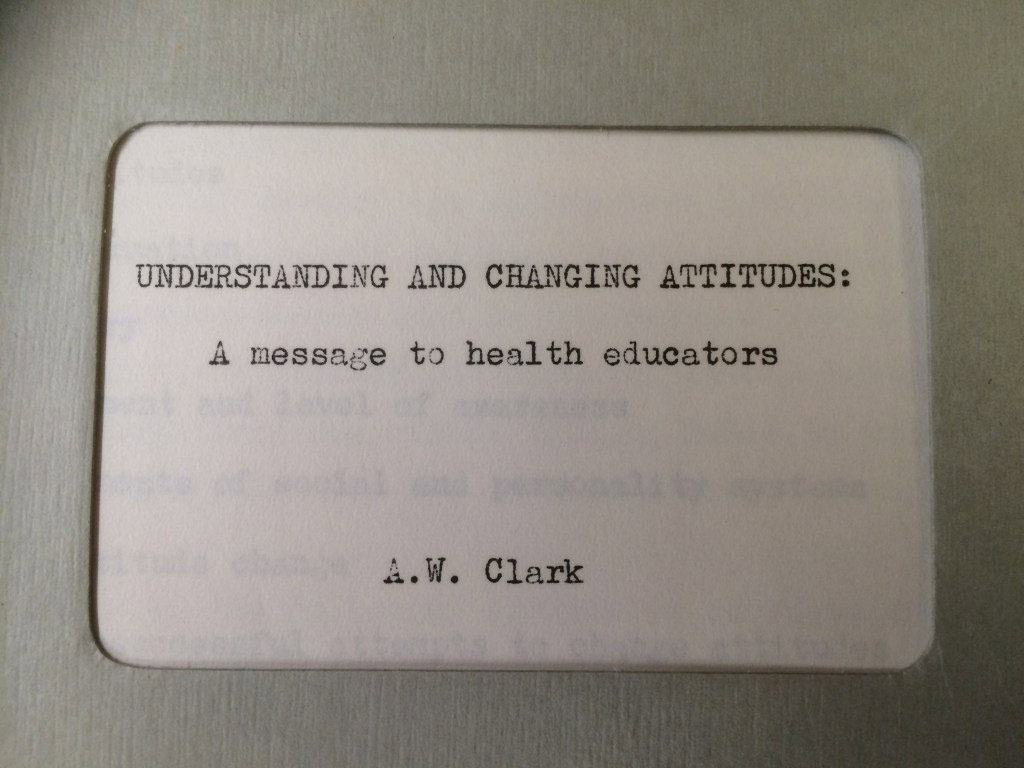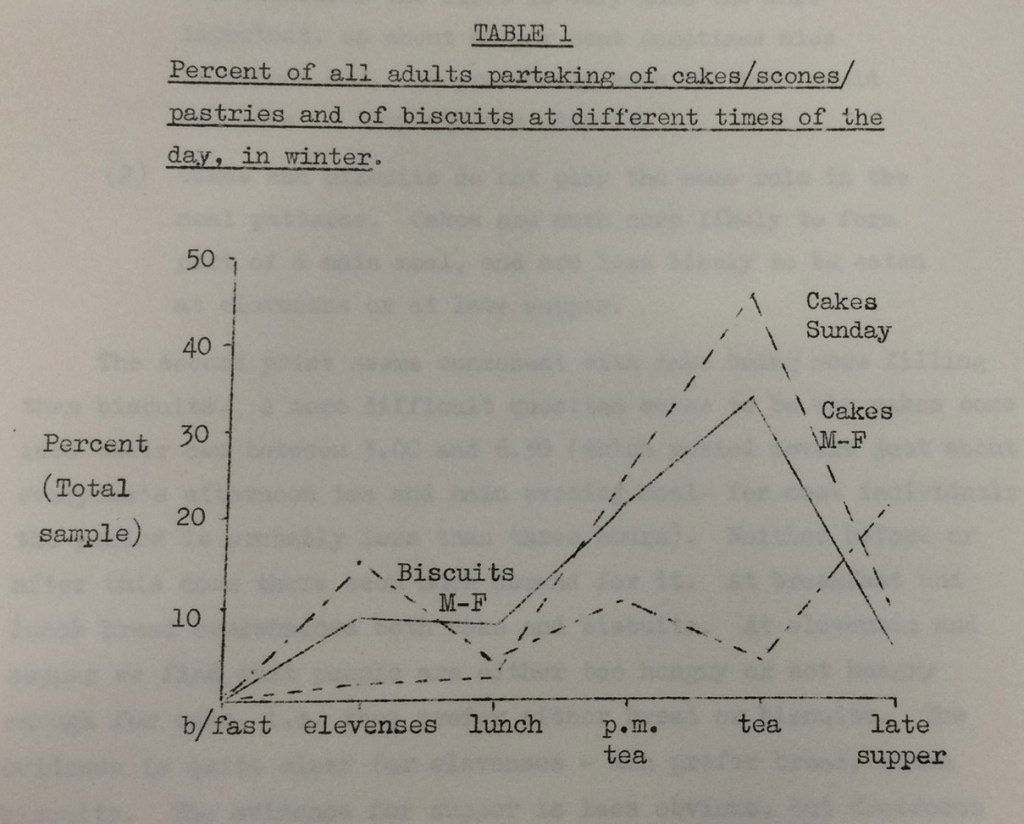The first 130 boxes from the Tavistock Institute of Human Relations (TIHR) archive have now been catalogued and are available for researchers to discover, explore, and interpret at Wellcome Library. These papers – the registered document series (SA/TIH/B/1) – provide a framework for the research and outputs of the Institute from 1945 to 2005, containing key reports and findings from seminal social studies from the post-war period to the early 21st century.
The reports trace the dynamic and cutting-edge work undertaken by the Tavistock Institute’s team of social scientists, anthropologists and psychoanalysts, in their efforts to apply new thinking emerging in the social sciences to the most prevalent contemporary needs and concerns of society. The topics addressed in the reports are hugely diverse, covering many aspects of the organisation of human social and cultural relations, institutions, social conflicts, and organisational structures and group dynamics.

The reports document the theoretical perspectives and interdisciplinary approaches adopted by these social scientists, as they evolved in practice in the twentieth century: systems and field theory combined with new perspectives in psychoanalysis and psychology, from action research, through to organisational development and evaluation work.
Given the diversity of these reports (take for example, these reports: “Comparative Study of Mining Systems”; “Plastic Bag Wrapping of Fish: some housewives’ attitudes”; “Monitoring of Race Relations Policy in the Civil Service”; “The Impact of Technology on the Social Meaning of Work”), the decision was made to undertake a more granular approach to the cataloguing work, listing every report title and author name in the catalogue description.* This should lead to some interesting search opportunities – try typing ‘housewives’ into the keyword search of the Tavistock archive to see how the Institute was exploring the sociology and gender of the stay-at-home wife in the 1950s onwards; or search ‘shipping’ to bring up the range of studies on the community on-board the ship, maintaining work/life balance for sailors, and human elements in shipping casualties.

The papers are arranged and organised according to the document number they were given by the Institute when they were in use, and broken up into the following series: TIHR registered document series; 1T (Technical); A series (administrative); Centre for Applied Social Research (CASR); Human Resources Centre (HRC); 2T (2 Tavistocks); Evaluation Development and Review Unit (EDRU), reflecting the unit creating the documents, and the types of records contained.
Many of the reports focus on industrial conflict and relations, the betterment of working conditions, and the use of social science in industry and organisational contexts. Tavistock Institute’s work at the coal face (pun intended) is captured in key reports from the 1950s, which document how social scientists engaged in questions about management/worker interactions, employee participation and fulfilment, and industrial democracy in the coalmining industry.

This piece of action research in the coal mines was seminal, exploring how workers responded to changing technologies, following the shift from conventional to composite working in longwall coal mining. Embedding themselves within the workplace, these social scientists explored how these changes impacted work satisfaction, productivity, and employee engagement. The key focus was the interaction between people and technology in the workplace, a method which later became known as sociotechnical approach, and became central to much of TIHR’s work. Much of our understanding about the notion of ‘quality of working life’ owes much to this early Tavistock Institute research.
As these records testify, TIHR built on experience from early action research projects like the Coal Studies to use social science approaches to tackle a whole host of needs and concerns of the workplace during the latter half of the twentieth century, including the stabilization of work groups and redistribution of authority, the impact of technology on the social meaning of work, Fleet Officer turnover, the shortage of engineers, and the training of milkmen, to list but a few.
Public health and the organisation of health and social care are also key issues which present themselves in these papers, over the course of TIHR’s history. The Tavistock team did not shy away from the big questions posed by the needs, issues and changes within large care-giving organisations like the National Health Service, documented within these reports, and particularly during the 1960s and 1970s. These include decision making processes in hospitals, the management and structure of hospitals, how to treat patients with limited information, menu planning in hospitals, the organisation of emergency surgery, and other questions concerning the organisation of care-giving institutions.

More recent reports (1990s onwards) from the Evaluation Development Review Unit (EDRU) capture the evaluation work of the Institute, documenting vitally important large-scale projects, many working with the European Commission and government bodies, and developing innovative evaluation approaches to dynamic issues. These include developing technologies and systems tailored to the design, distribution and delivery of learning materials; gaining understanding of how rural telematic applications can best contribute to rural development; encouraging continuing vocational training in companies; and strengthening the ongoing work of evaluation and assessment through addressing the role of formative evaluation in learning technology systems development.

Alongside these complex and dynamic large scale studies, TIHR also undertook consumer research, with studies providing fascinating glimpses of the more mundane aspects of day-to-day life, from the psychology of washing up, to notes on cake usage and preference, and housewives’ attitudes to fish fingers.

These consumer reports, dating back to 1950s, provide snapshots of life in post-war Britain. Detailed reports on all aspects of life in the home are captured, so those long-awaited research questions on attitudes to Bovril and Marmite in 1963, and 1950s women’s attitudes to their hair, can finally be answered. Here’s one snippet: housewives interviewed by TIHR about their attitudes to fish fingers all complained that ‘fish fingers were not what they used to be’, and that the ‘novelty’ of fish fingers was starting to wear off.

From Marmite and Bovril to the big issues about how we organise ourselves and interact with the world around us, these reports demonstrate how the social sciences have been applied to better understand human relations over the past 70 years. This first section of the archive is perhaps a little tantalising, as it only provides the finished write-ups of studies and research – the more detailed field notes, correspondence and related papers of the Institute will be catalogued over the coming year. Watch this space, and follow our archive project blog for more information.
To launch this first section of the archive, and to celebrate the diversity of research and reports contained in the collection, we will be tweeting titles of reports from the archive over the course of the day. Follow us @t_i_h_r and let us know what you think.
*With huge thanks to Kendra Bean, Gareth Carter and Hannah Walsh for their help enhancing metadata on catalogue entries and making it possible to catalogue details of each and every report.